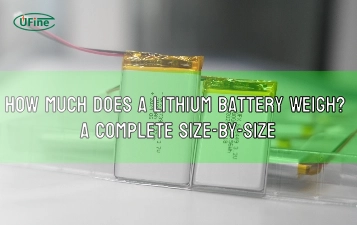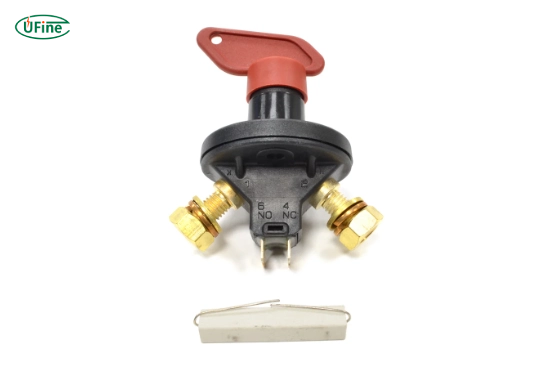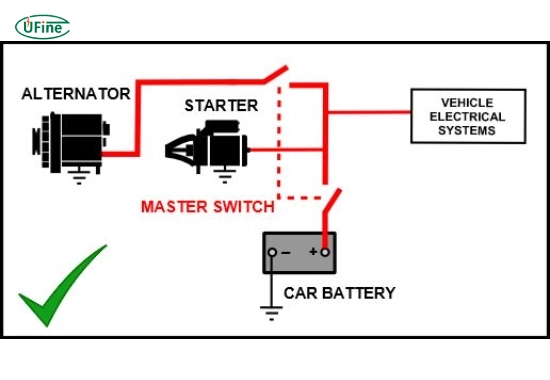A battery switch with resistor in a race car is a small but essential component that protects your race car battery and electronics, improves safety, and ensures your vehicle complies with racing regulations. Whether you’re a weekend amateur or a professional driver, understanding this device could save you from costly electrical damage and keep your car race-ready.
Let’s explore in detail why using a battery switch with resistor in race cars matters, how it works, and what you need to consider before installing one.
Part 1. What is a battery switch with resistor in a race car?
A battery switch with resistor in a race car is a specialized kill switch designed to disconnect the battery while protecting sensitive electronics from voltage spikes. Unlike a standard kill switch that simply cuts all power, this version includes a resistor that allows a small amount of current to continue flowing safely.
This low-level current prevents sudden voltage drops that could damage your ECU, alternator, or other sensitive components. It also helps maintain data integrity in devices like data loggers and digital dashboards.
In other words, it’s not just a switch. It’s a safety buffer for your entire electrical system.
Part 2. Why do race cars need a battery switch with resistor?
Using a battery switch with resistor in race cars is crucial for both safety and performance. Race cars use advanced electronics, including:
- Engine Control Units (ECUs)
- GPS telemetry systems
- Digital dashboards
- Ignition control systems
All of these are highly sensitive to electrical surges or sudden disconnections. When power is cut without a resistor, the alternator can produce a voltage spike, which may cause:
- Component failure
- Memory loss in ECUs
- Data corruption
- Ignition misfires
Racing environments push these systems to the limit. A resistor-equipped switch ensures that your car shuts down smoothly and safely, preventing catastrophic damage.
Part 3. How does a battery switch with resistor in a race car work?
The resistor in a battery switch with resistor race car system acts as a controlled path for residual energy to escape. Here’s how it works:
- When the switch is turned “OFF”, it breaks the main power circuit.
- The resistor remains connected across the terminals.
- This resistor allows a small, safe current to flow, ensuring that:
- Capacitors discharge slowly
- Voltage spikes are neutralized
- Magnetic fields in inductive components collapse without arcing
This process prevents damage from back-EMF (Electromotive Force) and extends the lifespan of the car’s electrical components.
Part 4. What are the risks of not using a battery switch with resistor in race cars?
Ignoring the use of a battery switch with resistor in your race car can lead to several serious issues:
- Voltage spikes: These can instantly fry your ECU or alternator.
- Data loss: Your ECU may lose its map settings or calibration data.
- Component wear: Ignition modules and sensors can be damaged by electrical arcing.
- Non-compliance: Many race organizers require this setup to pass tech inspection.
- Safety risks: Improper power cut-off can cause sparks or electrical fires.
In short, not using a resistor risks your car’s performance, your wallet, and your safety.
Part 5. Benefits of using a battery switch with resistor in a race car
Installing a battery switch with resistor in a race car provides multiple advantages:
- Protects sensitive electronics
Prevents overvoltage damage to crucial systems like ECU, ignition, and alternator. - Compliance with racing regulations
Most racing bodies (FIA, SCCA, NASA) require resistor-equipped kill switches. - Smooth shutdowns
Avoids sudden voltage drops, ensuring a more stable electrical environment. - Improved component lifespan
Reduces electrical stress on systems during power-off events. - Emergency-friendly
Allows track marshals or drivers to safely cut power without damaging vital systems.
Part 6. Racing regulations requiring a battery switch with resistor in race cars
If you plan to compete in sanctioned motorsport events, a battery switch with resistor in your race car is often mandatory. Here’s what some major organizations require:
- FIA: Switch must isolate battery and prevent alternator feedback.
- SCCA: Must be accessible from outside the vehicle and include resistor protection.
- NASA Racing: Requires external kill switch with controlled voltage cut-off.
- 24 Hours of LeMons: Even budget builds must follow kill switch safety rules.
Failing to meet these rules may result in disqualification or penalties.
Part 7. How to install a battery switch with resistor in a race car
Installing a battery switch with resistor in a race car involves careful planning and execution. Here’s a step-by-step guide:
Tools you’ll need:
- Wrench set
- Wire cutters/strippers
- Heat shrink tubing
- Multimeter
- Mounting hardware
Installation steps:
- Disconnect the battery.
- Choose a visible, accessible location (often on the dash or exterior firewall).
- Mount the switch securely using brackets or a panel cutout.
- Connect the positive battery cable to the input terminal.
- Run the output terminal to the car’s fuse box or starter.
- Attach the resistor wire across the terminals as instructed.
- Test the switch with a multimeter to confirm correct operation.
- Reconnect the battery and verify system behavior.
Tip: Always follow the manufacturer’s wiring diagram.
Part 8. Choosing the right battery switch with resistor for race cars
Not all switches are created equal. To ensure reliable performance, choose a battery switch with resistor for race cars that includes:
- High current rating (100A+ continuous)
- Weatherproof casing, if mounted externally
- Built-in resistor or resistor terminal
- FIA or SFI certification
- Clear ON/OFF markings
Recommended brands:
- Cartek
- Longacre
- Moroso
- Genuine FIA-rated switches
Avoid cheap alternatives—they may fail under race conditions.
Part 9. What resistor size is used in a battery switch for race cars?
A typical battery switch with resistor race car setup uses a 2.7–3.3 ohm resistor rated at 15–25 watts. This provides:
- Enough resistance to limit current flow
- Sufficient power dissipation to prevent overheating
- Compatibility with 12V and 24V systems
You can also add a small fuse inline with the resistor for added protection. For DIY setups, use a shock-resistant and heat-tolerant ceramic or wire-wound resistor.
Part 10. Common mistakes when using a battery switch with resistor in race cars
If you’re installing or using a battery switch with resistor in a race car, avoid these common pitfalls:
- ❌ Using the wrong resistor size
- ❌ Choosing a switch with low amperage rating
- ❌ Improper or loose connections
- ❌ Mounting the switch in an inaccessible location
- ❌ Not labeling the switch clearly for emergency crews
Double-check your wiring, test everything, and make sure your setup complies with your racing organization’s rules.
Part 11. FAQs about the battery switch with resistor race car
What is the purpose of a battery switch with resistor in a race car?
It allows safe power disconnection while protecting electronics from voltage spikes and preventing alternator damage.
Is a battery switch with resistor required for racing?
Yes. For safety and compliance, most racing series, including the FIA and SCCA, require a battery kill switch with a resistor.
Will the resistor drain my battery?
No. The current allowed through the resistor is minimal and won’t significantly affect battery life.
Can I install a battery switch with resistor myself?
Yes, if you are familiar with wiring. Follow the instructions carefully or consult a professional.
What happens if I use a switch without a resistor?
You risk voltage spikes, ECU damage, alternator failure, and non-compliance with race rules.
Related Tags:
More Articles

How Much Does a Lithium Battery Weigh? A Complete Size-by-Size
Lithium batteries weigh less than lead acid ones. A 12V 100Ah weighs around 25 to 30 lbs. This guide covers weights by size and type.
AGM Battery Charging Made Easy: Tips, Settings & Mistakes to Avoid
Learn how absorbed glass mat battery charging works, what settings to use, and how to avoid common mistakes to extend battery life.
Understanding 4.8V Battery: A Guide for Beginners and Buyers
From NiMH to lithium packs, explore all about 4.8V batteries. Learn features, charging tips, comparisons, and more in this detailed guide.
Fix PS5 Controller Battery Issues: Complete Repair Guide
Learn how to fix PS5 controller battery issues, including fast drain, not charging, and battery replacement tips. Full guide to improve battery life.
PS4 Controller Battery: Everything You Need to Know
Learn everything about PS4 controller battery type, size, lifespan, features, replacement, and care. Play longer with the right battery!





